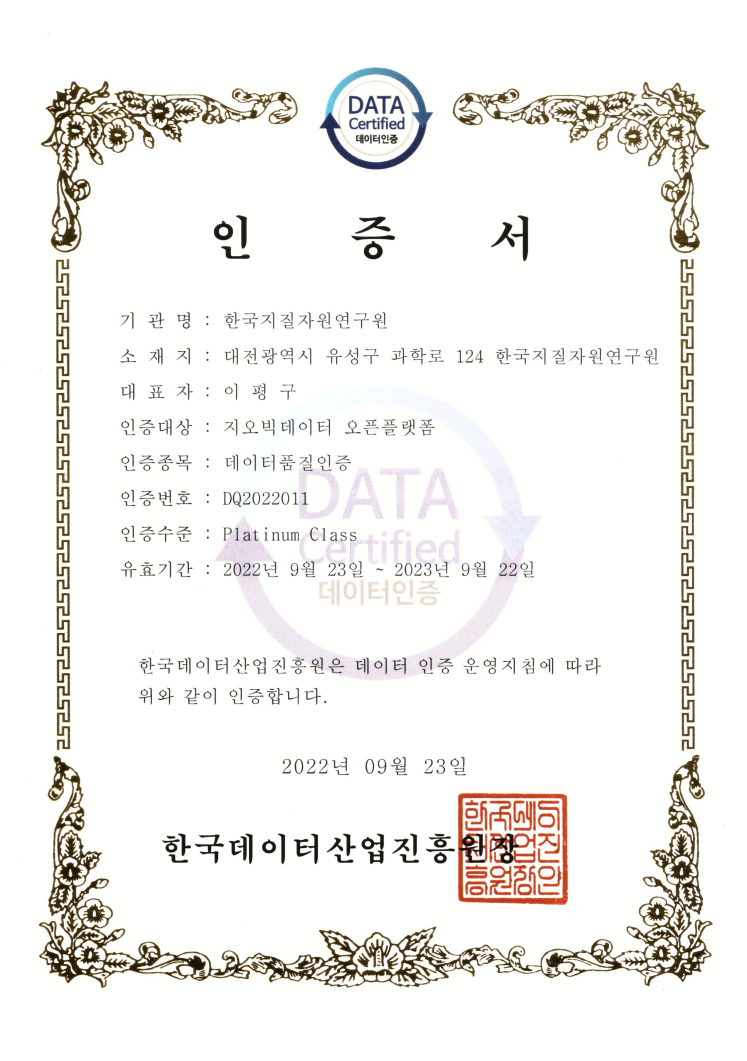경주 오도리 부채꼴 주상절리의 독특한 용암 지형
Data Quality Certification (DQC-V)

| Data type | KIGAM 보고서 |
|---|---|
| Title | 층서 고생물연구 : 공주분지의 층서대비 연구 |
| Author | 최성자 |
| Language | KOR |
| Call Number | KR-97-C-01-1997-R |
| Publication Information | 韓國資源硏究所, 1997 |
| Abstract | Sedimentological and paleontological studies were carried out in the Kongju Basin, Chungcheongnam-do, Korea. The Kongju Basin is bounded on the north and south by NE major faults. Bedding form line of the basin is generally N30°-50°E trend and cut by N45°E major fault and smaller NS or NW fault. These faults have been activated during pre- and post-sedimentation time. The bedding form line pattern allows to be seen the fold axis of N40°E strike and SW dipping, and reveals synclinal structure. The syncline axis is offset by late stage faults, such as NS, NW trend normal or strike-slip fault. These faults were responsible for the development of R, R', P and tension fracture, and were originated from the sinistral strike-slip N45°E major fault. The order of the fractures is N30°E. N30°-40°W, and N10°W-N10°E. The Kongju Basin comprises thick sequence (more than 2 km thick) of conglomerate, gravelly sandstone, reddish mudstone and greenish/dark gray mudstone. Based on distinct/gradational changes in either sedimentary facies and associations, grain size distribution, or the volume ratio of conglomerate, (gravelly) sandstone and mudstone, the succession can be divided into 3 lithologic units, Songseonri, Sinheungri, and Aengbongsan formations The Songseonri Formation is exposed along the basin margin and are gradational to Sinheungri and Aengbongsan formations basinward. Conglomerate of the Songseonri Formation is characterized by pebble-to-boulder-grade conglomerate with wedge or sheetlike bed geometry. The deposits were accumulated in gravel bed channels and unchannellized aggrading fan surfaces by debris flow and hyperconcentrated flood flow. Conglomerate and (gravelly) sandstone of the Sinheungri Formation consists of massive or stratified sandstone and pebble-to-cobble-grade conglomerate that are commonly organized as fining-upward units with erosive bases. It represents gravelly or sandy braided stream on terminal alluvial fan. The thick reddish mudstone of the Sinheungri Formation was accumulated in floodplain by channel overflow. Dark gray/greenish gray mudstone of the Aengbongsan Formation was deposited by suspension settling in floodplain and lacustrine environments. Plant fossils were found from the dark gray mudstone beds of the Aengbongsan Formation and classified into 3 species; Cupressinocladus sp., Frenelopsis sp., and Brachyphyllum sp.. Charophyta were yield from the dark gray mudstone beds of the Aengbongsan Formation. Charophyta is classified into 2 species of 2 genera: Amblyochara sp., Obtusochara sp.. According to the occurrences of charophytes, the Kongju Basin could be correlated with the Hayang Group of the Kyongsang Basin. For the publication of a pictorial book of Korean fossil, 45 species of mollusca (bivalvia 36 species, gastropoda 9 species) are collected and discribed. Description includes picture with size, synonym list, characteristic, occurrence (formation), locality of each species. For the reader's convenience, the description is written in Korean |
| Page | 144 p. |
| Keyword | 층서, 고생물, 층서고생물, 공주분지, 공주, 층서대비, 분지 |
| Source |
http://library.kigam.re.kr/report/1997/층서고생물연구공주분지의층서대비연구.pdf |
Comments